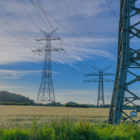Implementing green building techniques offers numerous benefits. Reduced energy consumption leads to lower utility costs. Enhanced indoor air quality promotes occupant health and productivity. Using sustainable materials minimizes environmental impact. Incorporating renewable energy sources decreases reliance on fossil fuels. Green buildings contribute to mitigating climate change by reducing greenhouse gas emissions. Water conservation measures preserve this precious resource.
Green buildings often enjoy higher property values and rental rates. Overall, adopting green building practices is economically, socially, and environmentally advantageous. Take a look at the benefits of implementing green building techniques.
Top Benefits of Implementing Green Building Techniques
Environmental Conservation
Implementing green building techniques helps in conserving the environment by reducing carbon emissions and minimizing waste generation. By incorporating renewable energy sources such as solar panels and wind turbines, buildings can significantly decrease their reliance on fossil fuels, thus reducing greenhouse gas emissions.
Strategies like rainwater harvesting and greywater recycling contribute to water conservation, which is crucial in regions facing water scarcity. The use of sustainable materials such as bamboo, recycled steel, and reclaimed wood reduces the depletion of natural resources and minimizes the environmental impact associated with traditional construction materials.
Energy Efficiency
Green building techniques prioritize energy efficiency, reducing energy consumption and lowering utility costs for building occupants. Features such as high-performance insulation, energy-efficient windows, and LED lighting systems help minimize heat loss or gain, resulting in optimized indoor temperature regulation.
Implementing smart technologies like programmable thermostats and motion sensors enhances energy management, allowing for better control over energy usage. By incorporating these energy-efficient strategies, buildings can achieve significant reductions in energy consumption, benefiting both the environment and occupants’ finances.
Improved Indoor Air Quality
Green buildings prioritize indoor air quality, ensuring a healthier and more comfortable environment for occupants. Features such as proper ventilation systems, low-emission building materials, and indoor plants help mitigate indoor air pollutants such as volatile organic compounds (VOCs) and allergens.
Adequate ventilation not only removes indoor pollutants but also regulates humidity levels, preventing the growth of mold and mildew. By promoting better indoor air quality, green buildings contribute to the well-being and productivity of occupants, reducing the risk of respiratory illnesses and enhancing overall comfort levels.
Economic Benefits
The adoption of green building techniques offers significant economic benefits for building owners, occupants, and communities. While initial construction costs may be higher than traditional methods, the long-term savings from reduced energy consumption and lower operational expenses outweigh the initial investment.
Green buildings often command higher property values and rental premiums, attracting tenants seeking environmentally friendly and sustainable spaces. Green building projects stimulate job creation in sectors such as renewable energy, green construction materials, and energy-efficient technologies, contributing to economic growth and job opportunities within communities.
Resilience to Climate Change
Green buildings demonstrate greater resilience to the impacts of climate change, ensuring durability and longevity in the face of extreme weather events. Features such as resilient building materials, passive design strategies, and green infrastructure help mitigate risks associated with flooding, hurricanes, and heat waves.
For instance, green roofs and permeable pavements reduce stormwater runoff, alleviating strain on drainage systems during heavy rainfall. Strategies like passive solar design and natural ventilation enhance thermal comfort without relying heavily on mechanical systems, making buildings more resilient to power outages and energy supply disruptions.
Conclusion
There are many benefits of implementing green building techniques. From environmental conservation to economic prosperity, these strategies promote sustainability and resilience. By prioritizing energy efficiency and indoor air quality, green buildings enhance occupant comfort and well-being. They foster social equity and community engagement, creating inclusive and vibrant spaces for all. Embracing green building practices is essential for a sustainable future.





